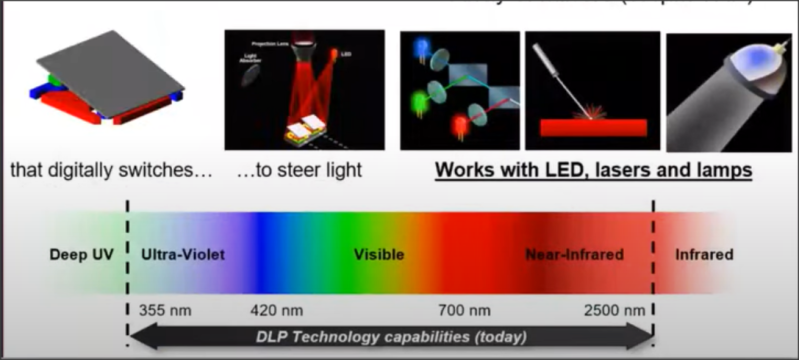
The majority of non-SLA resin 3D printers, certainly at the hacker end of the market, are most certainly LCD based. The SLA kind, where a ultraviolet laser is scanner via galvanometers over the build surface, we shall consider no further in this article.
What we’re talking about are the machines that shine a bright ultraviolet light source directly through a (hopefully monochrome) LCD panel with a 2, 4 or even 8k pixel count. The LCD pixels mask off the areas of the resin that do not need to be polymerised, thus forming the layer being processed. This technique is cheap and repeatable, hence its proliferance at this end of the market.
They do suffer from a few drawbacks however. Firstly, optical convergence in the panel causes a degree of smearing at the resin interface, which reduces effective resolution somewhat. The second issue is one of thermal control – the LCD will transmit less than 5% of the incident light, so for a given exposure at the resin, the input light intensity needs to be quite high, and this loss in the LCD results in significant internal heating and a need for active cooling. Finally, the heating in the LCD combined with intense UV radiation degrades the LCD over time, making the LCD itself a consumable item.
Enter stage left, Digital Light Processing or DLP to his close friends. DLP technology is not new, and is the basis for many projection systems you see all the time. DLP is much more efficient, needing much lower intensity light sources, resulting in cooler running, and vastly improved life. Unlike LCDs, the DLP chip does not degrade noticeably at all.
For UV applications, DLP devices already do exist, but they are very expensive. Until now. Texas Instruments have started production of a new DLP300s product for UV applications, [datasheet] optimised specifically for 3D printing applications, with a low price point of US$30 at 1k/units this will enable DLP printers at a price point you and I could consider. DLP printers produce considerably sharper features compared to LCD, which can sometimes be a curse, but the DLP300s has another cool feature. 8-bit grayscale support provides resin cured-edge smoothing where needed and only where needed.
Now, if only someone, somewhere had designed a machine with this DLP chip in mind? Enter stage right the ANYCubic Photon Ultra DLP coming to kickstarter on September 14th. How long before we see DLP take over the SLA market? It’s probably just a matter of time, and price.
DLP Chip:
Anycubic Kickstarter:
0 Commentaires